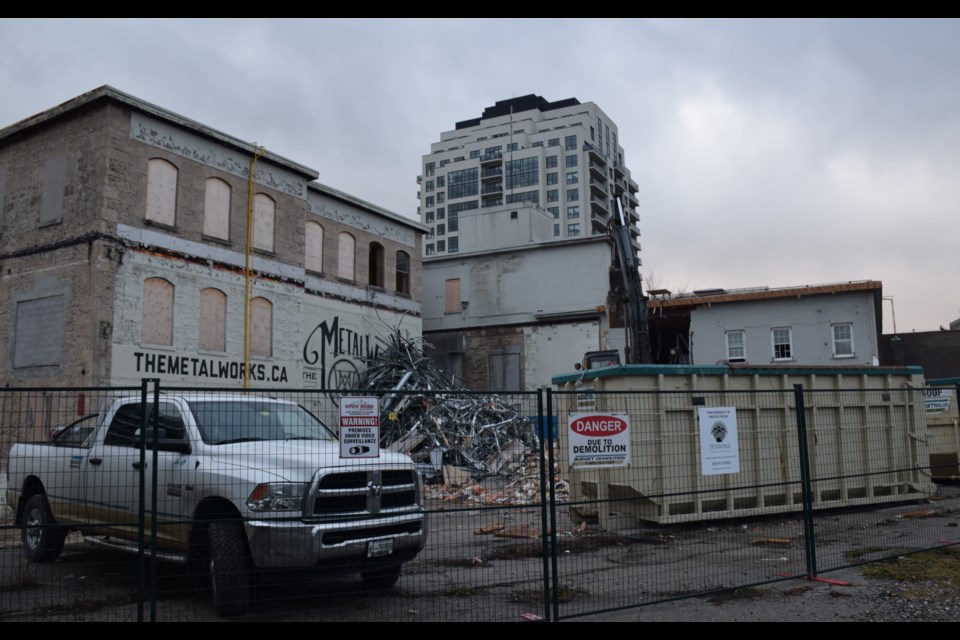Fusion Homes wasn’t exactly sure what it was getting into when it recently began renovations on historic structures in its The Metalworks development. The five structures, all appearing as one on the outside, are what remain of the former W.C. Wood appliance factory.
The builder is thickly into those renovations, and a company official said Thursday it is hard to predict where they will lead and what they might cost. But the results should be exceptional. The heritage structure is a series of multiple additions done over many years.
There’s signs of a serious structural gutting at the 5 Arthur Street location right now, as busted concrete and tangled metal accumulates outside a series of heritage structures that are conjoined and situated directly on the east bank of the Speed River.
Neal Hallock, Fusion’s director, land development and high rise, said a $1.2 million tax break to restore and refurbish the structures was a welcome incentive, and helped spur the work. The incentive came in July. But there is little doubt that it will cost in the high seven figures to complete the project.
The restoration and renovation is part of one of the largest residential developments ever in downtown Guelph, one that involves five high-rises, one of which is now up.
“We’re currently gutting the inside of the building, to uncover the heritage features and all the characteristics of the building that have been covered up over the years,” Hallock said. “We are doing that so we can keep planning on the eventual redevelopment of the building.”
He said there is some interest from a few tenants, but “nothing concrete yet.”
The current gutting operation is not particularly complicated, he said, and involves removing drywall, suspended ceilings, and steel studs. Nothing load-bearing is being altered.
“It’s just a large quantity of work, as opposed to being difficult,” he added.
The structure, he added, has great potential.
“It’s gorgeous,” he said. “We’ve seen some pictures from the crew that show the old limestone walls and the wood structure. And it is really, really nice.”
The tax incentive, he said, helped solidify plans to make the heritage project financially feasible.
Hallock said the project will cost “a lot.” He is hopeful it won’t reach the eight-figure range.
